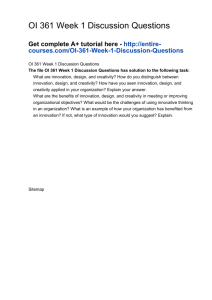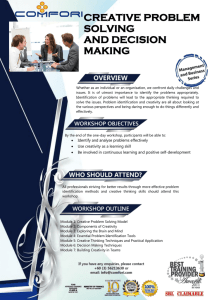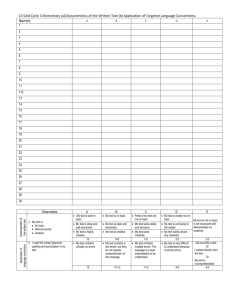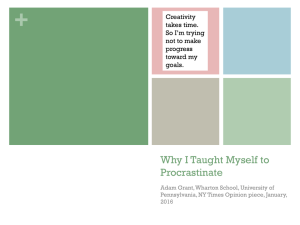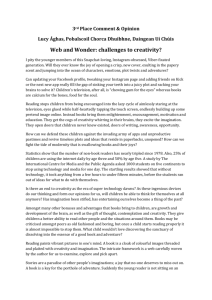1
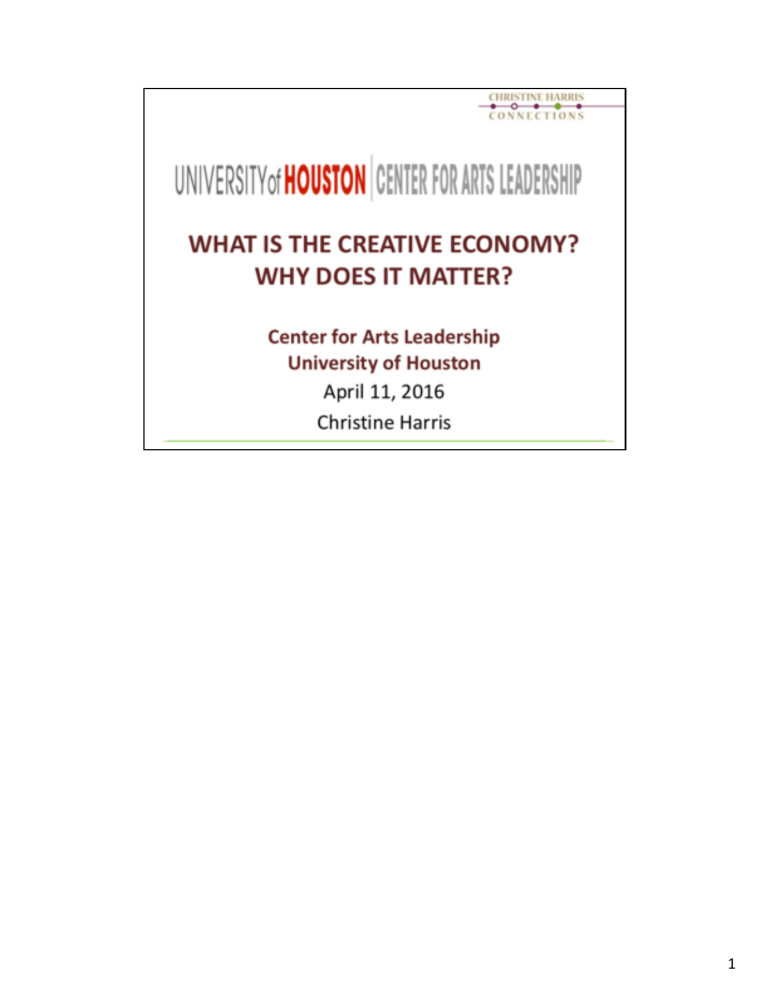
1
The discussion on what is art and what is creative economy can be challenging?
What we have begun to realize is that in addition to the aesthetic, human and spiritual connection of art, there has been and is an expanding impact of arts and culture on fostering a vibrant, healthy community economy.
LEFT – Portland, ME – public art that led to significant tourism and increased pride in the cityscape; artist employment
RIGHT – MAM – new addition which led to increase in standard of architecture and higher tourism
2
-‐useful to look at how this all came about
-‐Florida: includes about 30% of the US workforce, inc healthcare, law, business, education. Some think definition so large it becomes a bit unworkable.
-‐ArtPlace/NEA creative placemaking: lots of controversy, still a new field
-‐MAA – started with New England
3
We know the creative sector is a global growth industry worldwide.
UK and EU
Australiasia
4
5
Continuum:
Imagination – conceive what is not
Creativity – applied imagination
Innovation – unique/novel creativity; bringing forth something entirely new
Need to include invention and entrepreneurship
Need to include education
Goal is to understand in context of other industries that communities invest in – to be at the community and economic development tables.
Ultimately, role of creativity in empowering and engaging communities to maximize their potential as sustainable and desireable communities.
Each community can take this information and find its own path to a creative community.
6
Challenge to use the word ‘creative’ – we are all creative
This is about employing a cultural and creative aesthetic in the production of goods and services for economic benefit – which then builds a more sustainable community.
Support – education and financial
7
IMPORTANT to note that these classification systems include nonprofit, for profit and independent businesses.
Government data has pros and cons – but the advantage is trackability, comparability and benchmarking. Disadvantages – misses new businesses, timeframe, codes don’t change
8
Using the NAICS business descriptions to identify creative business segments
Nonprofit, for profit and independents
9
Using SOC occupation codes to identify types of creative jobs across all industries
10
The merging of the NAICS and SOC data for jobs/workers.
There are creative industry businesses who employ both creative occupations and other kinds of occupations
There are creative occupations in ALL types of businesses that employ creative workers
This diagram shows how they relate and intersect to help define the ‘creative economy’.
11
This is the picture of Houston’s creative economy.
Houston Arts Alliance has taken the lead in defining, measuring and integrating the creative economy. Part of the national conversation
These numbers show the 2011 research results and the recently published 2014 results.
22% increase is significant – Houston’s creative economy is growing. The 18% growth in “creative workers in other enterprises” is following a national trend of increased creative workers within businesses – more designers, marketers, etc. – recognizing that the key to consumer and business differentiation is creativity and they want those resources within their business rather than contracted out.
Interesting 31% increase in “other workers in creative enterprises”. This seems to be indicating that the creative businesses are growing so they need additional staff to support their development.
12
NATIONAL STUDY of America’s Creative Economy 2010 –27 locales
Creative talent is a hot commodity – for any business. Growing it locally and keeping most of it developing locally is often excellent leverage for a vibrant economy.
Most new and emerging small businesses can work any where because they are so technology intensive – more of that growth will bring a more varied and dynamic economic portfolio to a community
Comparing what is happening with the economic value of a community’s creative assets to the economic value of other industry clusters – to help a community determine the best return on its investments.
When communities make investment and priority decisions, we want the creative sector to be at the table!
13
Triple community impact
14
Measuring the value of our arts-‐related and other creative businesses is spreading across federal agencies – seen as a key economic differentiator
15
Nationally, this is a ‘field’ – not a government recognized industry cluster.
Should it be an industry cluster?
How do move the conversation forward to recognize and support the interactive concepts of creativity, imagination, innovation, invention, entrepreneurship and design?
And, at the end of the day, EVERY creative economy is local – based on authentic local assets and growing what works for a community
16
It is VERY new for the various types of creative businesses to think of themselves as a
‘cluster’ or ‘sector’.
Has been a lot of competition with each other or at least being independent of each other.
Economic value is the jobs, wages and business output of the members of the industry themselves (i.e. number of jobs in creative businesses) versus looking at the impact of spending patterns to support an activity (i.e. dinner, parking, babysitting to attend theatre)
Opportunity to re-‐think the breadth and depth of our ‘creative assets’
17
Communities are under pressure to differentiate their economy; wider variety of economic businesses
Talent can, and will, live anywhere – why choose Houston?
How does any community develop and then retain its talent – the best and the brightest?
18
19
20
21
22

